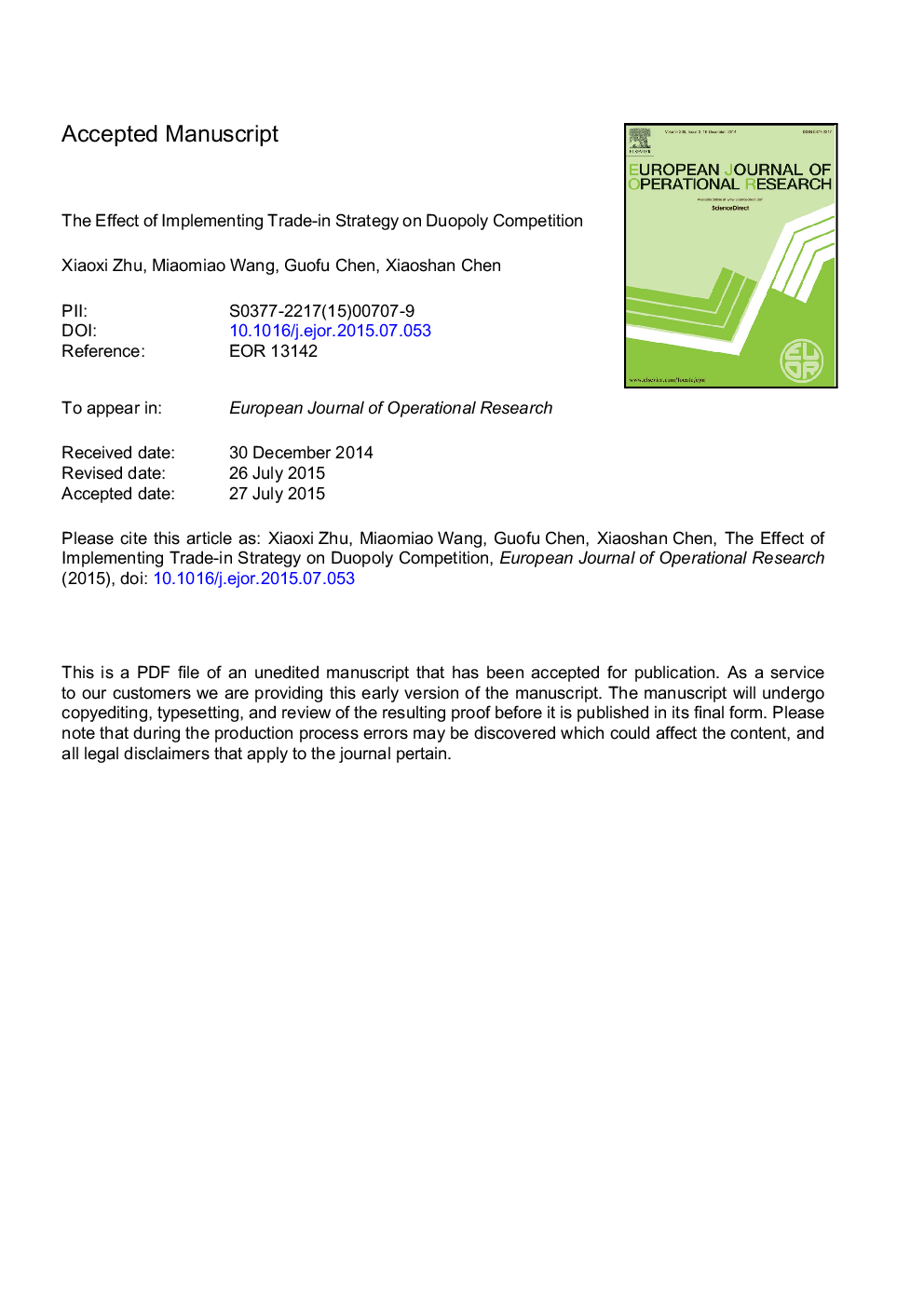| Article ID | Journal | Published Year | Pages | File Type |
|---|---|---|---|---|
| 6896144 | European Journal of Operational Research | 2016 | 44 Pages |
Abstract
We study a firm that makes new products in the first period and collects used products through trade-in, along with new product sale, in the second period. To conduct a convincing analysis, we initially evaluate the problem in a duopoly situation in which one firm (firm A) implements trade-in and the other one (firm B) does not. We subsequently introduce the competitive environment in a two-period planning horizon to identify thresholds that determine the trade-in operations, and then derive the equilibrium decisions of the resulting scenarios. We characterize the optimal production quantities that are associated with parameter b (the sum of used product salvage value and government subsidy) in the Nash equilibrium. Results indicate that adopting trade-in could bring competitive advantage for firm A in terms of market share and profit. If the new product sale is comparatively profitable, then the trade-in firm may forgo some of the collection margin by raising the trade-in rebate and selling additional units to increase new product sale in the second period. Moreover, the total collection quantity does not always increase with government subsidy. We consequently expand the model to the case where both firms compete in trade-in and derive the corresponding decision space of the duopoly firms. Finally, we explore the effect of adopting trade-in on consumer surplus and compare it in the two models.
Related Topics
Physical Sciences and Engineering
Computer Science
Computer Science (General)
Authors
Xiaoxi Zhu, Miaomiao Wang, Guofu Chen, Xiaoshan Chen,
